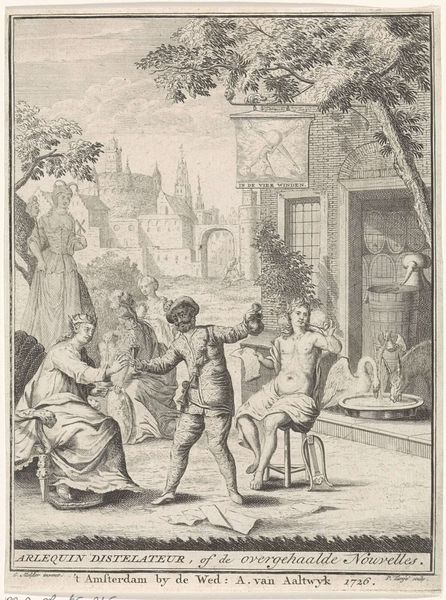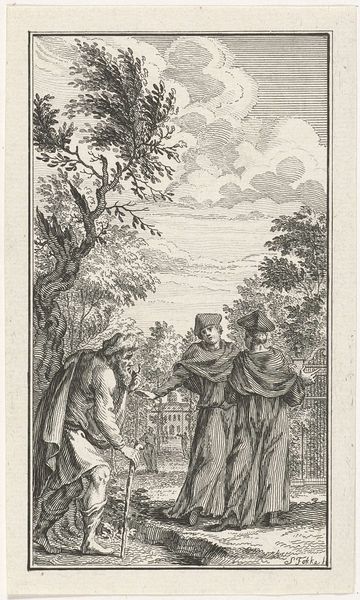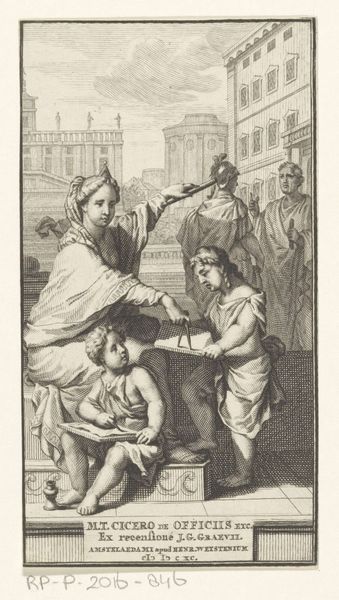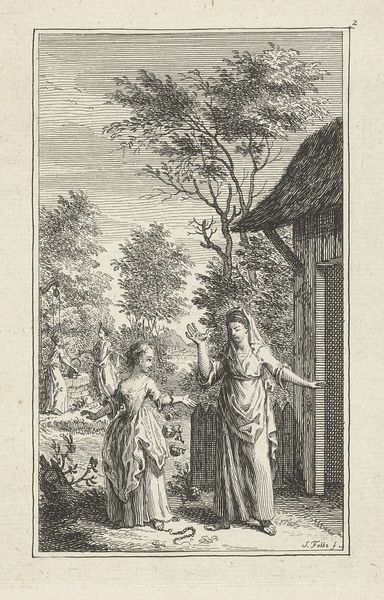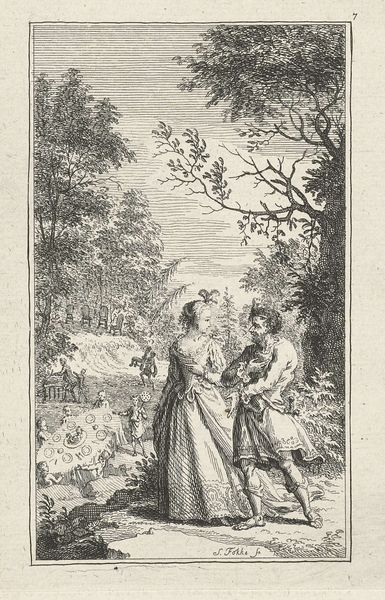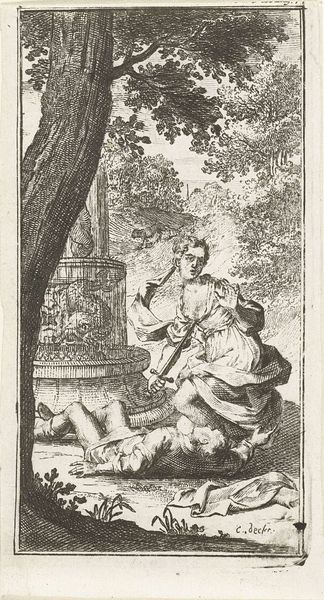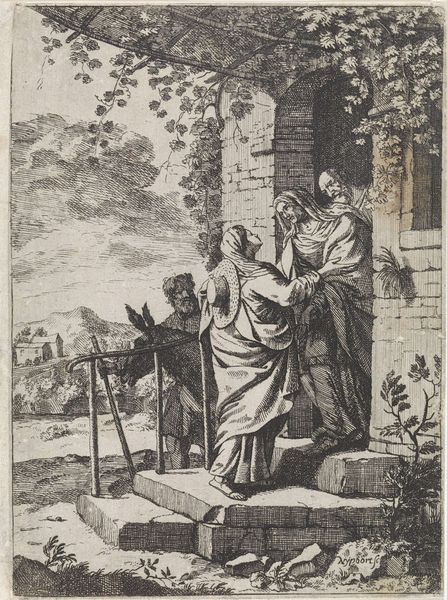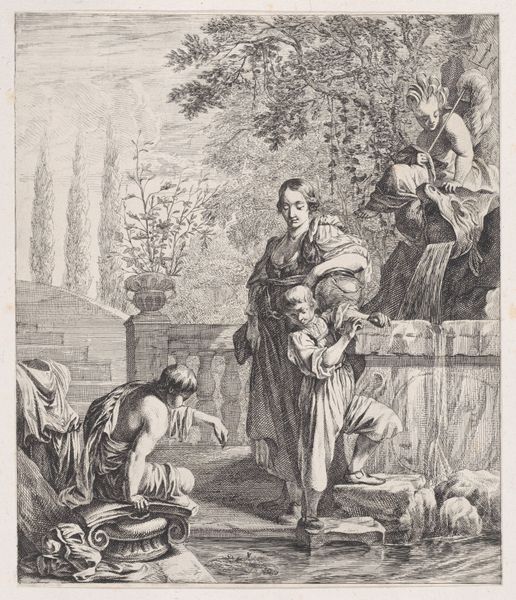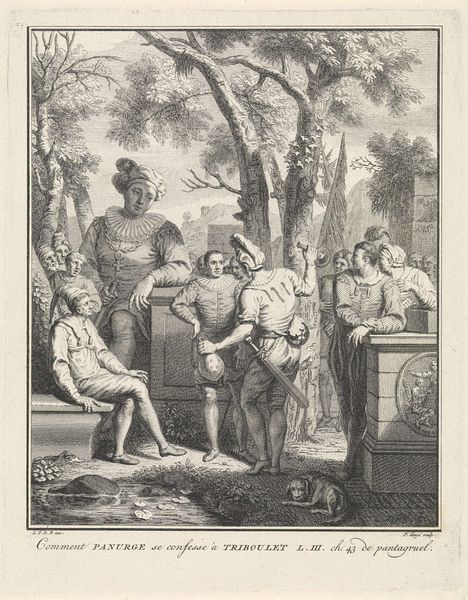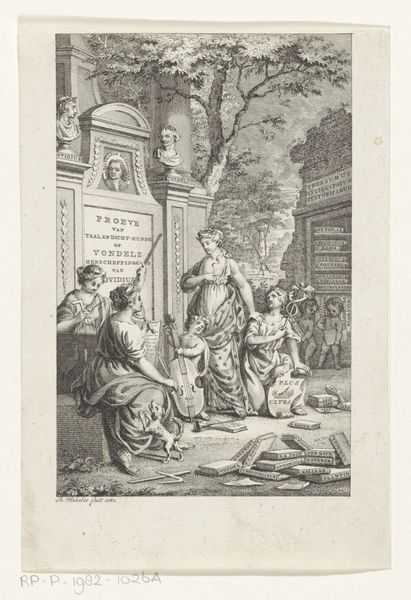
Dimensions: height 144 mm, width 88 mm
Copyright: Rijks Museum: Open Domain
Editor: So, this is "Two Women and a Man in a Garden" by Reinier Vinkeles, an etching from 1765. It feels like a scene from a play, or a staged portrait, with the figures so deliberately posed within the garden setting. How do you interpret this work, considering its time? Curator: Considering it was made in 1765, its important to understand the socio-political forces at the time. Genre painting was gaining popularity as a way to explore daily life and moral lessons. Note the idealized representation of the figures. This harkens back to classicism but in a somewhat democratized form, making these 'ideal' virtues more attainable for a broader audience. Editor: Democratized how? Is it because we see ordinary people, not Gods or Royalty? Curator: Exactly. The garden, rendered in such detail, speaks to a burgeoning interest in nature and landscape as a symbol of cultivated civility. Gardens were places where different social classes mingled to some extent and were carefully cultivated to represent social harmony and natural bounty. So, how might this inform your interpretation? Editor: I guess it means the artist might be trying to say that their lives, these ordinary people in this ordinary-looking garden, matter just as much as any historical or religious figures in paintings we've seen. Curator: Precisely. It presents a carefully constructed image of social interaction and virtue within a specific societal frame. Its value lies in its documentation of shifting cultural values through artistic representation. Editor: I hadn't really thought of it that way, but now I see how the garden and the arrangement of the figures contributes to an important record of everyday social ideals and the values promoted by genre painting at that time.
Comments
No comments
Be the first to comment and join the conversation on the ultimate creative platform.
